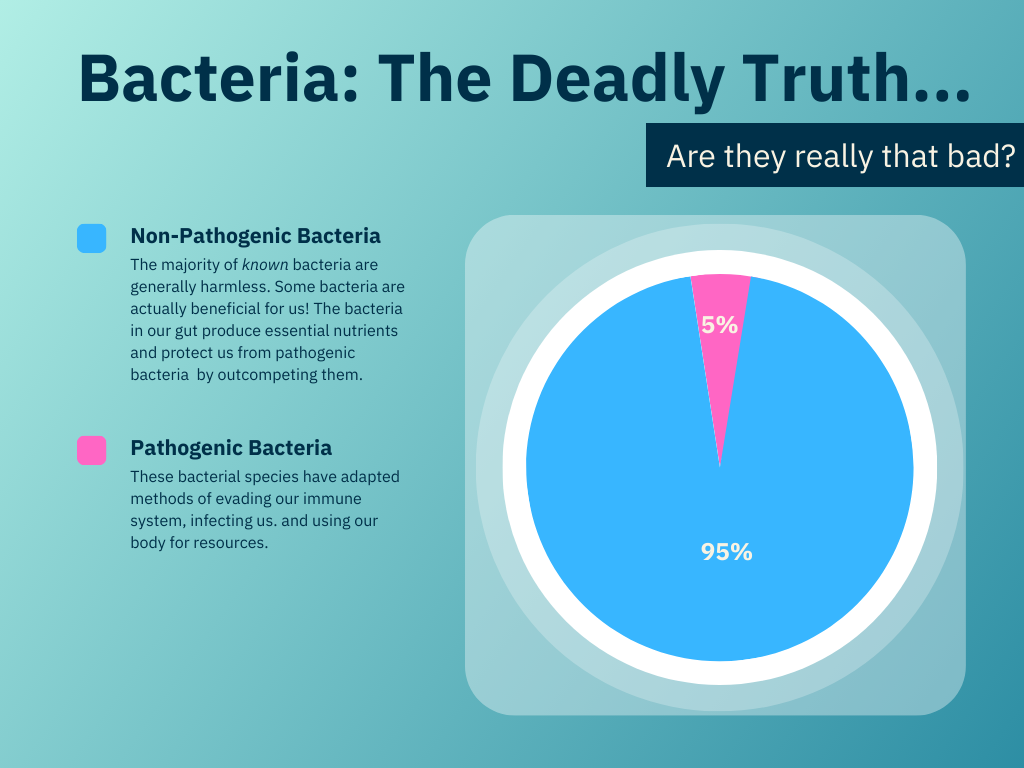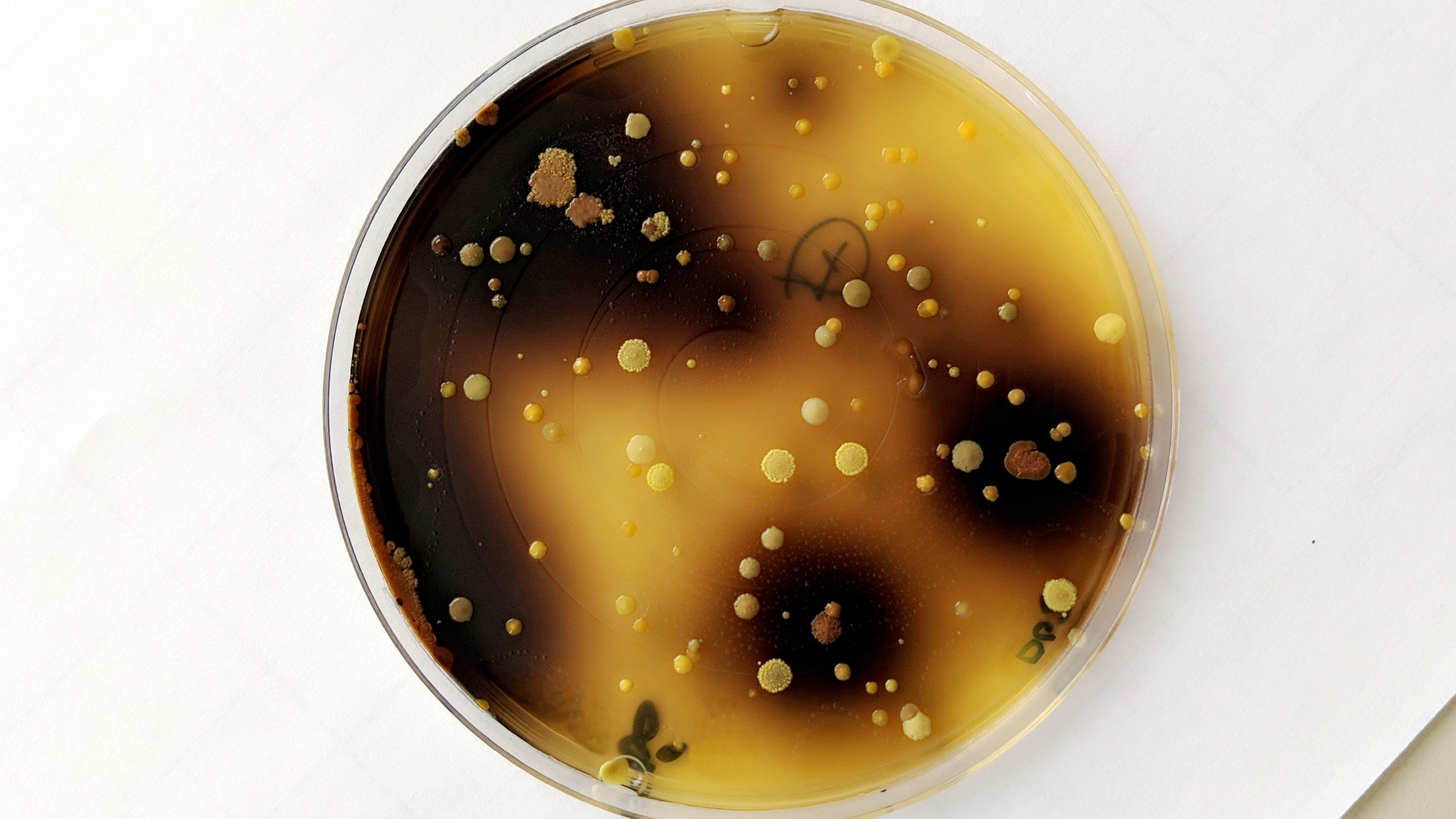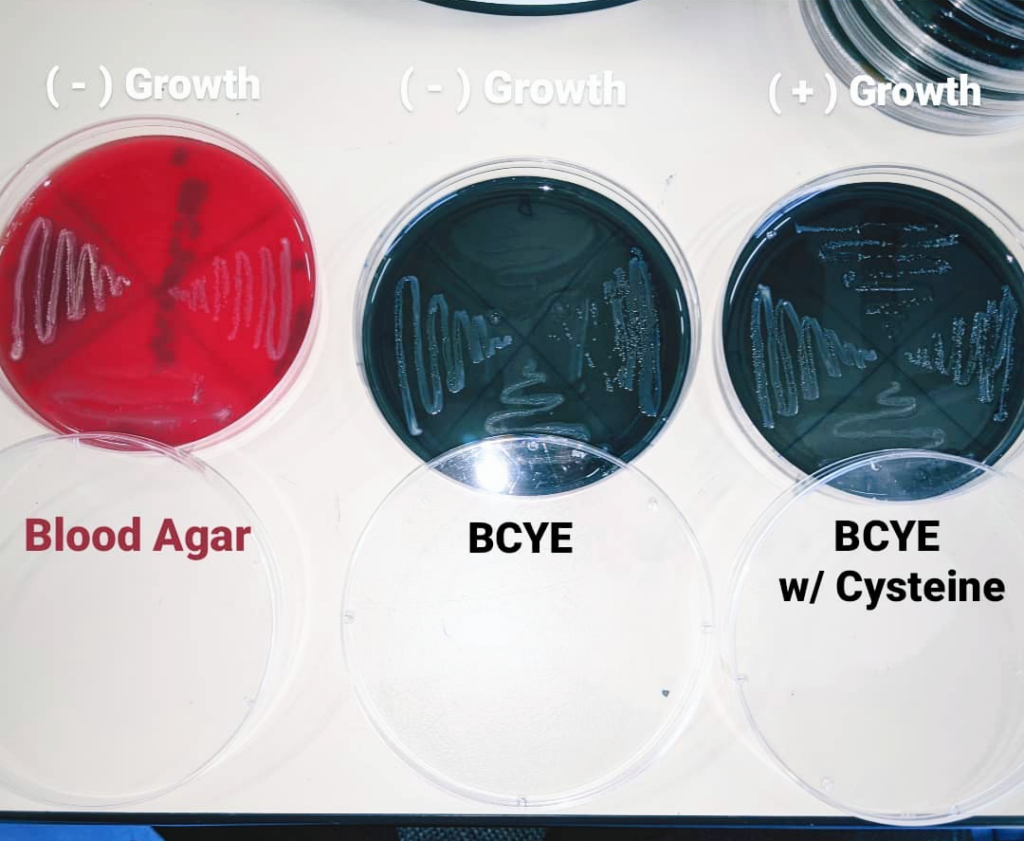As a microbiologist, I have the pleasure of working with bacteria, viruses, fungi and parasites. I particularly like working with bacteria as they are generally robust, easy to work with, and the results of working with them produce satisfying shapes and vibrant colours.
So… what are bacteria? Bacteria are single-celled organisms that inhabit all types of environments. Most bacteria are harmless to us, and quite a few are actually quite beneficial. In comparison, there are few pathogenic species that really give bacteria a negative connotation.

Bacteria, as with all living organisms, require specific nutrients and environments to grow. Bacteria grow by dividing into two cells that are genetically identical to each other. Most bacteria replicate quite fast, and they start to accumulate into masses of bacteria called “colonies”. On agar, these colonies can grow into various shapes and colours as seen on the agar plate below.

For me, the most interesting bacteria are the pathogens. My interest stems from both fear and respect of these organisms. My main “specialty” is Legionella pneumophila, an organism that lurks in untreated water ranging from ponds to untreated water fixtures. It can cause a serious type of pneumonia called Legionnaires disease, or less severe disease called Pontiac fever (which is not the disease where you get a strong urge to buy a Pontiac vehicle). Pictured below is a positive case of Legionella pneumophila (Right plate, top quadrant).
More information about Legionella

Here are some other pathogenic bacteria of varying degrees of scariness that I work with in the lab!
Listeria monocytogenes – 9.5/10 Scary as heck.
Salmonella enterica – 8/10 Double glove.
Vibrio cholera – 9.5/10 NOPE.
Staphylococcus aureus -3/10 This would be different if I worked with MRSA.
Streptococcus spp – 3/10 Mostly work with innocuous species (as far as I know).
Pseudomonas aeruginosa – 2/10 Looks good, smells better.
Serratia marcescens – 2/10 It creates the pink film around bathtubs and showers.
Escherichia coli – 3/10 Most strains aren’t that dangerous.
Next week, I’ll introduce agar, what it is, how its used, and the different types of agar I use in lab!

Leave a Reply
You must be logged in to post a comment.